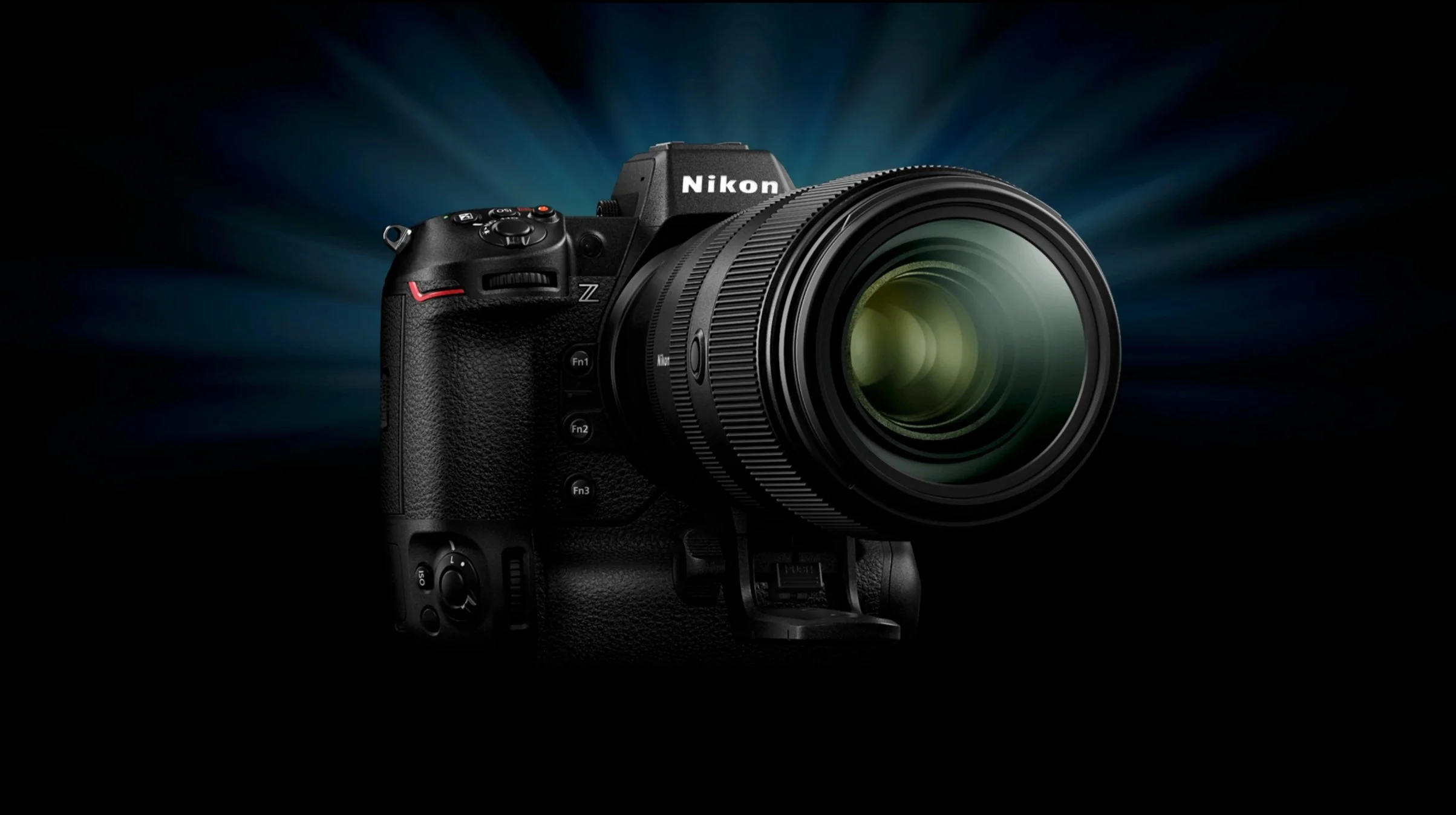Nikon z9 - First Impressions and How to set up the camera
Now that I have this camera in my hand, it is time to take it somewhere and give it a good test so I can wrap my mind around all the features that Nikon has told us this camera has. What better location for a wildlife and travel photographer to test it than back-to-back safaris in Kenya and Tanzania. But before I continue with this article, I have to give a shout-out to Camera Canada in London Ontario. Even as an NPS member, if it wasn’t for Antony, this camera would not have made it into my grateful hands in time for this trip without his help.
OK, let’s start this article by taking a look at the feature list of goodies this flagship camera from Nikon claims to have.
Key Features of the Nikon Z9
45.7MP FX-Format Stacked CMOS Sensor – The Z9 has a newly-designed 45.7-megapixel stacked backside-illuminated CMOS image sensor, a new EXPEED 7 processor, enhanced autofocus with subject detection features, 8K video recording, and much more. Rumors are swirling around who created this sensor. Some say Nikon, others say Sony. Nikon is claiming that they developed this sensor
EXPEED 7 Image Processor. On paper this processor looks to be far superior than the EXPEED 6 – Complementing the sensor is an advanced processing engine, the EXPEED 7, which offers speeds approximately 10x faster than a Z 7II. This engine works in conjunction with the stacked sensor design to realize impressively fast AF speeds, burst shooting rates, a high buffer capacity, fluid video performance, and quick all-around handling.
8K30p and 4K120p Video, 10-Bit Internal – Matching the high-end photo attributes, the Z9 is Nikon's most capable video camera as well, with a variety of resolutions and frame rates available up to 8K. Using full pixel readout, UHD 8K 30p video can be recorded with continuous shooting possible for approximately 2 hours 5 minutes.
Full-frame 4K recording is available, too, up to 120p for slow-motion playback. Using an 8K area, oversampled UHD 4K recording is possible at up to 30p for increased sharpness and detail. Also, high-resolution frame grabs can be recorded in-camera from 8K and 4K videos, for producing 33MP or 11MP stills, respectively.Continuous shooting speeds of 20 fps when shooting in raw, 30 fps when shooting in JPEG, and an impressive 120 fps shooting rate when recording 11MP stills, with all rates supporting full AF/AE performance.
493-Point Phase-Detection AF System – Covering the full sensor area, the Z9 uses a 493-point phase-detection AF system to realize fast and accurate focusing performance. This system is benefitted by the high-speed communication of the Z interface along with the speed of the sensor that enables AF readings to occur at up to 120 fps. This focusing system also supports working in low-light conditions with a Starlight mode that permits focusing down to -8.5 EV to greatly benefit astrophotography, concert, and other nighttime shooting applications.
AI-Based Subject Detection and Tracking – Utilizing a new algorithm and deep learning technology, automatic Subject Detection can now recognize nine distinct subject types, ranging from humans to animals to airplanes to bicycles. When working in Auto-Area AF, these subjects will automatically be detected, focused on, and tracked to ensure sharp focus when the subject is moving across the frame. Eye-Detection AF, specifically, has been tuned for improved accuracy and refined recognition of eyes in the scene regardless of how small or large they are within the image frame.
The Z9 also sees the debut of the 3D Tracking mode in a Nikon mirrorless camera. This popular focusing mode from Nikon's DSLRs pairs with subject detection capabilities to lock onto fast and erratically moving subjects that move parallel and perpendicular to the camera axis. Additionally, there are also three Dynamic-Area AF modes, with a range of focus area sizes, to suit capturing a broader variety of moving subject types.No Mechanical shutter – A feature that will surely send ripples into the industry. This will probably cause Sony and Canon to follow suit. Relying on the speed and stacked design of the sensor, the Z9 completely forgoes a mechanical shutter and uses just an electronic shutter for all capture modes. The speed of the sensor enables recording at up to 1/32,000 sec and the stacked structure reduces motion distortion for accurate depiction of fast-moving subjects, like golf clubs, baseball bats, and automobiles. Also, despite the absence of a mechanical shutter, flash sync up to 1/200 sec. is still supported as well as high-speed sync functions.
Blackout-Free Real Live Viewfinder – Real-Live Viewfinder is an advanced EVF utilizing a 3.69m-dot OLED panel with adjustable luminance up to 3000 cd/m2 for clear visibility in bright conditions. This EVF also works in conjunction with dual-stream technology for blackout-free viewing when shooting continuously.
3.2" 4-Axis Tilting Touchscreen LCD – A first for Nikon, the Z9 incorporates a 3.2" 2.1m-dot four-axis tilting touchscreen LCD that better supports working from high and low angles, regardless if shooting in the horizontal or vertical orientation. This screen's four-way tilting design allows for easier viewing from a variety of positions and the user interface orientation will also shift depending on how the camera is held.
Vertical Grip, 2x CFexpress Type B Slots – Not much to say here… EXCEPT!!! But larger cards that can handle the amount of images that this beast can take without the buffer willing up. Two 256g cards for a wildlife photographer would be my suggestion.
5 GHz Wi-Fi, Bluetooth, and GNSS – Matching the professional build quality, the Z9 is fitted with a variety of connectivity options to suit various workflow needs:
Full-size HDMI port for outputting video to an external recorder or monitor
USB 3.2 Gen 2 Type-C port supports tethering, data transfer, and in-camera battery charging
Ethernet port supports 1000BASE-T wired LAN connection for transferring files over FTP
10-pin port offers wide accessories and remote connectivity
PC sync port for flash sync
Bluetooth and Wi-Fi (2.4 and 5 GHz) permit wireless transferring of files, remote camera control via a mobile device, and works in conjunction with the NX Mobile Air app for file management
GNSS for in-camera geotagging and recording of location info while shooting
First Impressions
As I unboxed the camera I was surprised at how big and heavy this camera was. After all, this was a mirrorless camera that I purchased. Dont take me the wrong way. It wasn’t D6 heavy. There's no question that the Z9 is a robust camera with excellent build quality worthy of Nikon's heritage. Although, at 1,340g with its battery and a memory card inserted, the Z9 isn't overly heavy. Personally, I like the weight and feeling in my hand of a beefy camera. Its what attracted me to Nikon years ago. Nikon just has a certain je ne sais quoi about how their bodies feel when in your hand.
The Z9 is the best-feeling Z series camera yet. And frankly, it's not a close contest. The Z9 feels like it's perfectly molded to my hand, while others with smaller hands may find it awkward. The front grip is excellent. It feels a lot like the D5's grip, which is high praise. The shutter release is easy to reach and feels very good in use. The integrated vertical grip also feels excellent without adding much size to the camera. The Z9 is larger than a Z7 II, although smaller than a Z7 II with an add-on grip. The Z9 is also smaller than a Nikon D6 without sacrificing usability or overall comfort.
Buttons, buttons, and more buttons. This camera has easy-to-reach buttons everywhere. The best part… you can customize them all. This made me very happy as I read through the manual. yes… I read the manual. RTFM baby!
Wait, what, did I just see that correctly? The buttons can be illuminated. Do you know how long a guy like me that shoots aurora has been waiting for this? High five on that one Nikon!
Not a lot of button movement when compared to earlier Nikon models. ISO button, EV button, focus more, all of these buttons are still in the same location. Thank you for not making me create new muscle memory Nikon.
Money was left in my bank account for pizza before I travel because the cost was not as much as I expected it to be. Nikon will surely be catching Sony and Canon’s attention after they priced this camera less than the Canon R3 and Sony A1. Thank You, Nikon.
Let’s leave my initial thoughts behind. Here are a couple of Nikon videos to watch while I hop on the plane and head to Africa.
Here are a Couple Z9 product videos From nikon
Tanzania and Kenya, meet the Nikon Z9
While I am in Kenya and Tanzania with the Nikon Z9 I am going to be photographing mainly two styles of subjects.
(1) Wildlife - We came to Tanzania to focus on the Wildebeest Migration in the calving season of February. What better time of year to come to this location to test out the new autofocus modes in the Nikon z9. The predation and sheer quantity of wildlife will surely help me put this new camera to the test.
(2) Tribal photos - We are traveling deep into Kenya to visit, and photograph the numerous remote tribes of Kenya. I figured, hey, I have a new flagship camera, might as well go big and travel deep into Kenya to see tribes most people will never get to meet. These shoots will be mostly environmental photographs that are a mix if an outside studio with lighting, and journalist-type imagery that uses natural lighting.
Let me start by saying that I have never had so much confidence in my camera as I did with my new Nikon Z9 when photographing wildlife in Africa. I literally took this camera out of the box just days before my trip, and then spent my first flight reading the manual and watching videos on the different settings. I would never suggest that you do this… take a brand new camera on a huge one-month African adventure, but that’s what I did. Do as I say, not as I do comes to mind. LOL
When I arrived at my first lodge I had a day to photograph monkeys and birds on the property. It was a good way to learn how the different focus modes work in real life and create some muscle memory as I set up all the customized buttons that suit my particular type of photography. After that one day of practice, it was out to the Serengeti for some real-life photography.
Here are my findings using the Nikon Z9 in the real world.
Focus Acquisition
This is the faster-focusing camera I have used. The ability to lock onto fast-moving subjects amazed me. While it did take some time to get to know a camera’s AF performance by adjusting settings, testing different modes in different situations, swapping lenses, etc. The AF performance on the Z9 in this early firmware release has really impressed me.
Focus Modes
PINPOINT AF – Pinpoint AF is only available in AF-S and offers a very small, very precise AF point that is ideal for static subjects. I've found that Pinpoint AF is ideal for when you're using very shallow depth of field photography or you want to select a focus point that's otherwise smaller than the conventional AF points offered.
I've found that the tradeoff for the precision of the pinpoint mode is that focus speed can be slower, especially in low light (expected if a smaller area is being “sampled” for focus than the standard, single AF point modes).
SINGLE-POINT AF – Single-Point AF is similar to Pinpoint AF, but this mode is available in AF-S as well as AF-C. The Single-Point mode offers a standard-sized AF point whereby one of the camera's 493 AF points is selectable. This mode is ideal for stationary subjects and when you want to choose the exact point of focus.
DYNAMIC-AREA AF – The Dynamic-Area modes offer various size AF selectable area boxes — small, medium, and large. The smallest Dynamic-Area box is the same size as the standard Single-Point AF mode, while the medium and large boxes are larger.
Dynamic-Area AF mode is ideal for fast-moving subjects and wants to cover a larger portion of the frame with the AF box, whereby the user has to be less precise with point selection due to having a more forgiving and larger area of autofocus. Most importantly, if the subject briefly leaves the AF area, the Z 9 will use the surrounding points to continuously track and focus on the subject.
This mode is ideal if you're working on a specific composition and/or you're able to anticipate where in the frame your subject or the action will be. Sports, wildlife or other scenarios with fast-moving, dynamic subjects are an ideal use for this setting. Dynamic-Area AF is only available in AF-C mode.
WIDE-AREA AF – Wide-Area AF operates like a larger version of the Single-Point AF. It offers a larger field of active autofocus to detect and focus on a subject. Unlike Dynamic-Area AF, Wide-Area AF doesn't use peripheral sensors outside the AF area if the subject leaves the AF point.
There are two options for Wide-Area AF — larger and small. The smallest option is still much larger than Single-Point AF, while the lager option has more area still.
Wide-Area AF is ideal for subjects in motion where selecting a single, smaller AF target is either difficult or not needed, and/or when a larger area for focus is acceptable. The benefit for this mode is providing yourself a larger target for the benefits of either speed and/or simplicity of working.
Wide-Area is ideal for larger subjects or when a very specific focusing area on the subject may be less critical. This mode may be ideal for groups of people in the same plan of focus, such as a group portrait, or large subjects such as a vehicle or train.
3D TRACKING AF – 3D Tracking AF a mode that's existed in various DSLR models, but makes an appearance for the first time in a Nikon Z mirrorless camera with the Z 9. 3D Tracking takes the appearance of Single-Point AF, but with the exception that a half-press of the shutter release or full press of AF-ON, the Z 9 will continuously track that subject across the frame. When tracking, the AF point will move accordingly across the frame. Due to the need to continuously track a subject, 3D Tracking is only available in AF-C mode.
Previously in the Z series cameras like the Nikon Z 7II and Z6II, there was a tracking mode that could be accessed through the Auto-Area AF mode. For all intents and purposes, this tracking mode was basically identical to the 3D Tracking mode found in DSLR, with the exception of the extra (albeit very minor) steps of accessing it (via the OK button on the D-pad).
AUTO-AREA AF – Auto-Area AF mode lets the camera intelligently detect and determine subjects. This includes Eye, Face, Animal and Vehicle detection, whereby the camera will automatically prioritize and focus on these subjects. In addition, Auto-Area also extends to determining focus on scenes that fall outside those specific subjects for general photography.
Auto-Area AF will often prioritize nearer subjects over far subjects, and also factors in composition to prefer centralized subjects within the frame over objects or subjects at the periphery.
NIKON Z 9 SUBJECT DETECTION – Subject detection is not its own autofocus mode but a component of Nikon's intelligent autofocus system. Subject detection was present in all of Nikon Z cameras to a degree with Face and Eye detection, but the Nikon Z 9 brings subject detection to a new high with the expansion from people to include animal and vehicle detection.
Subject detection is available in several modes:
Wide-Area AF (small)
Wide-Area AF (large)
3D Tracking AF
Auto-Area AF
These modes implement subject detection to varying degrees of prominence. In Auto-Area AF, subject detection factors into a very large degree as the default priority whenever an appropriate subject is present. When multiple subjects are detected (as with multiple people or animals in a scene) the camera will allow for the selection between them. The Z 9 can detect up to 9 subjects simultaneously in a scene.
In order of preference, the following focus modes are what gave me the best results when photographing wildlife and birds in Africa.
1 – Wide-Area (small) with eye detect enabled - I had read a lot of reviews that Wide-Area Af was the best focus mode. Sure, it was very capable, but I found wide-area small to be a better choice. It picked up less foreground clutter and I had a better keeper ratio with this focus mode.
2 – Wide-Area AF (large) with eye detect enabled - This focus mode worked extremely well when there was no clutter in the foregrounds and backgrounds, with, and without eye detection enabled.
3 – Single point autofocus - this focus mode is one that will always be my go-to when eye detection can not be enabled. IT worked extremely well when focusing on an animal hiding in tall grass. It will never be my first choice. But it will always be my go-to in difficult focusing situations.
Frames per second
This camera can fill a memory card faster than you can expect. At 20fps in RAW it will catch every possible body and wing position you can conceive – but be prepared with enough storage and time to go through all those images. You can change the fps rate from 20 to 15, down to 12fps. How you set your camera is your personal preference. I ended up setting the camera to 12fps after downloading 2500 images on each of the first few days on safari.
ISO capabilities
I was extremely impressed with the noise, or lack of noise in my images. Some of the night photos you will see below were shot as high as ISO12,800. With a little tweaking in Lightroom the noise was negligible. I had more confidence shooting in low-light situations than I have ever had before.
Battery Life
I found that I was getting between 2500-3000 images from my EN-EL 18D batteries and 2000 images out of my EN-EL 18C batteries that came out to be used in the D6 and D850 with a better grip. Both batteries can also be charged in the MH-33 battery charger that came with the Nikon Z9. Keep in mind that the LCD screen will pay a huge factor in the batteries life. I probably could have gotten more images out of the battery by turning the LCD screen off.
Wildlife Images from Kenya and Tanzania
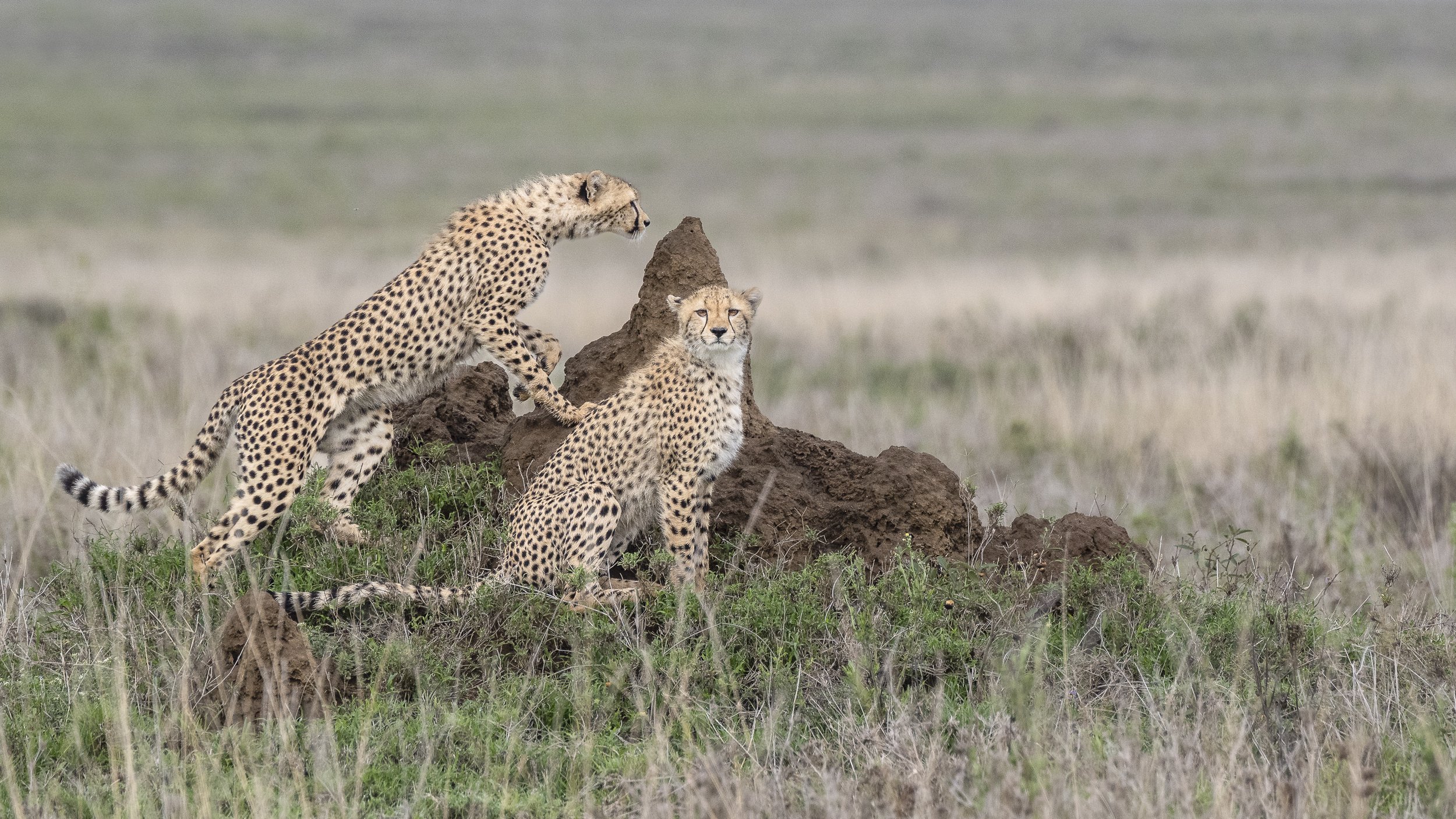
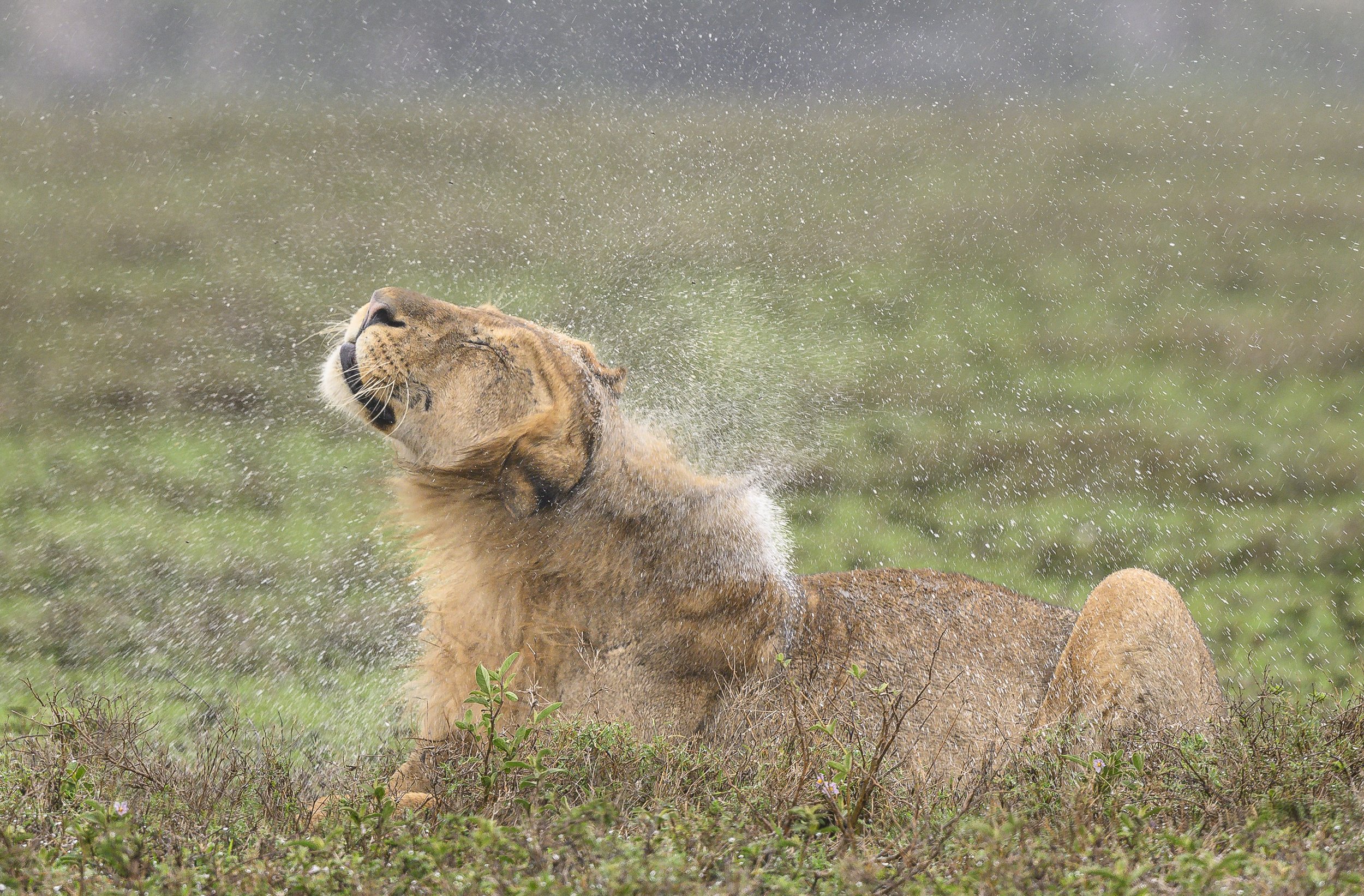
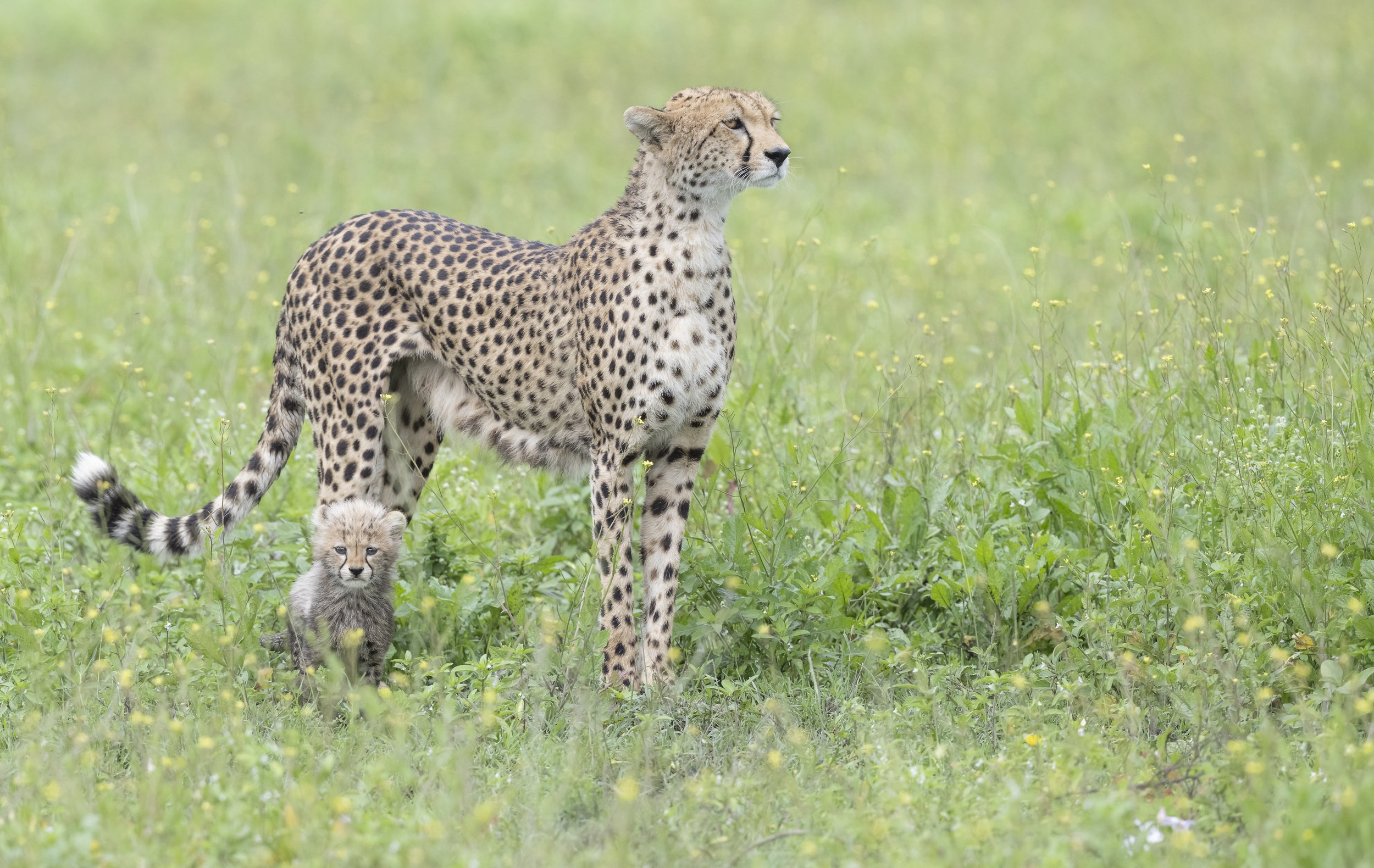
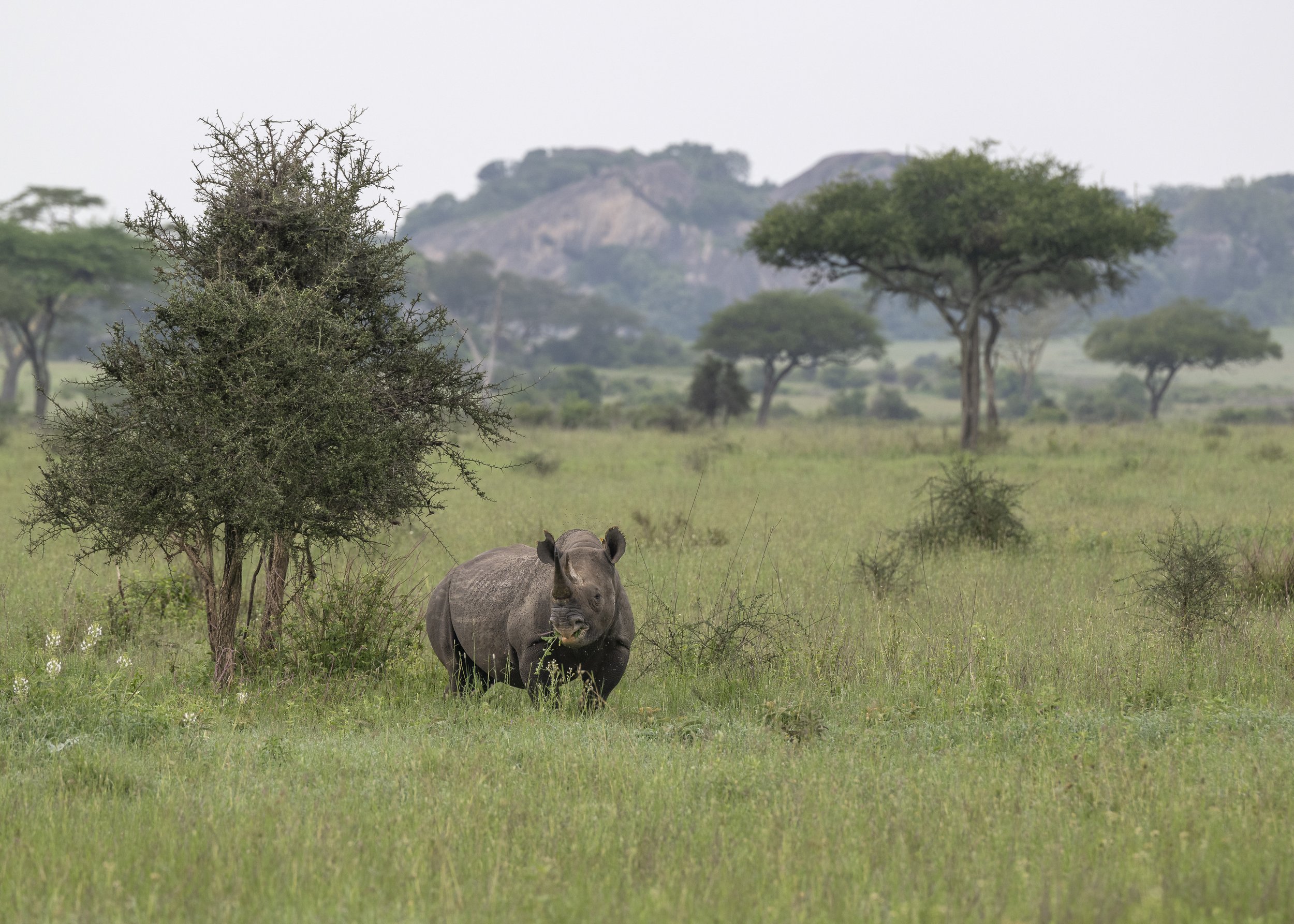
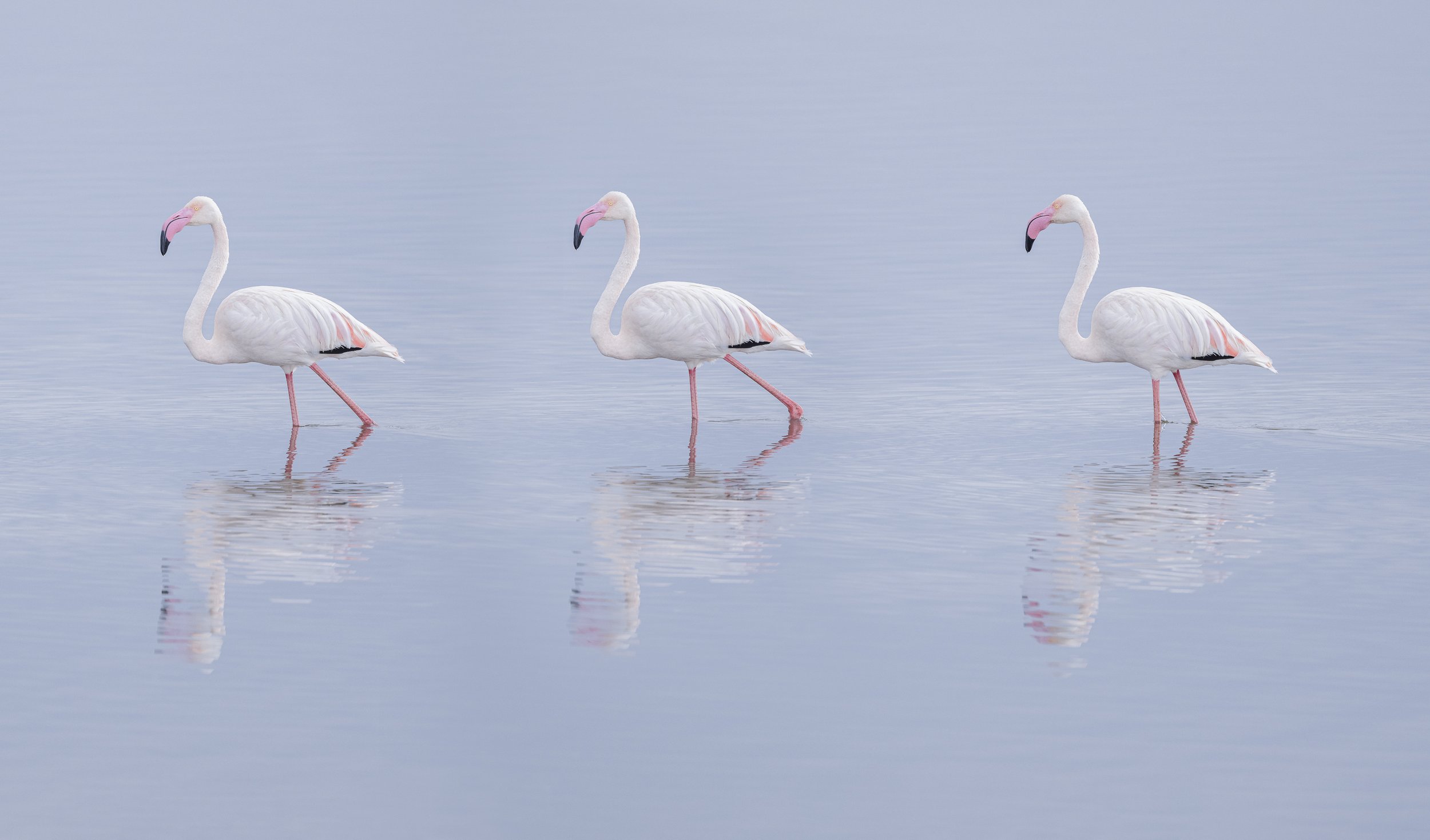
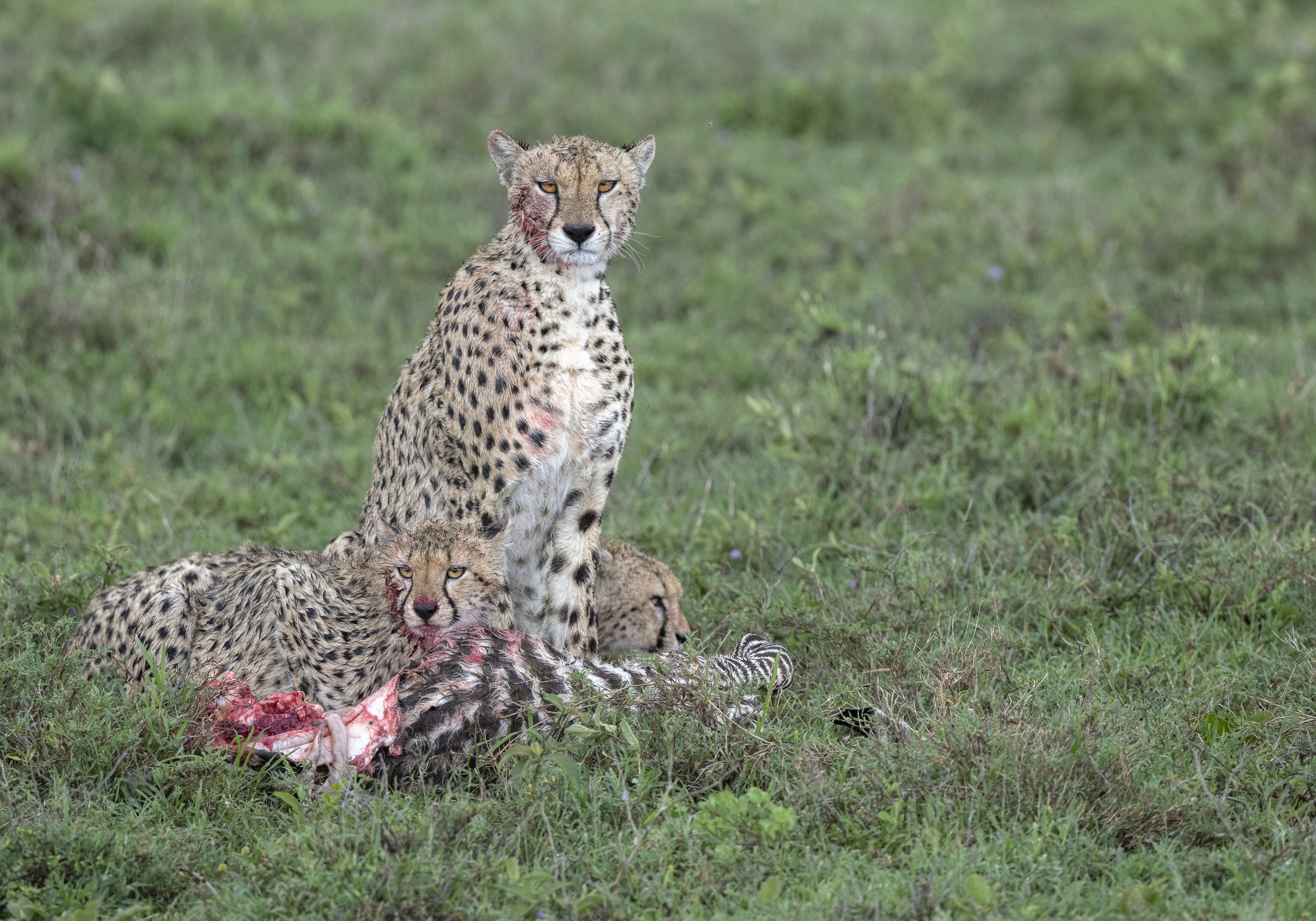
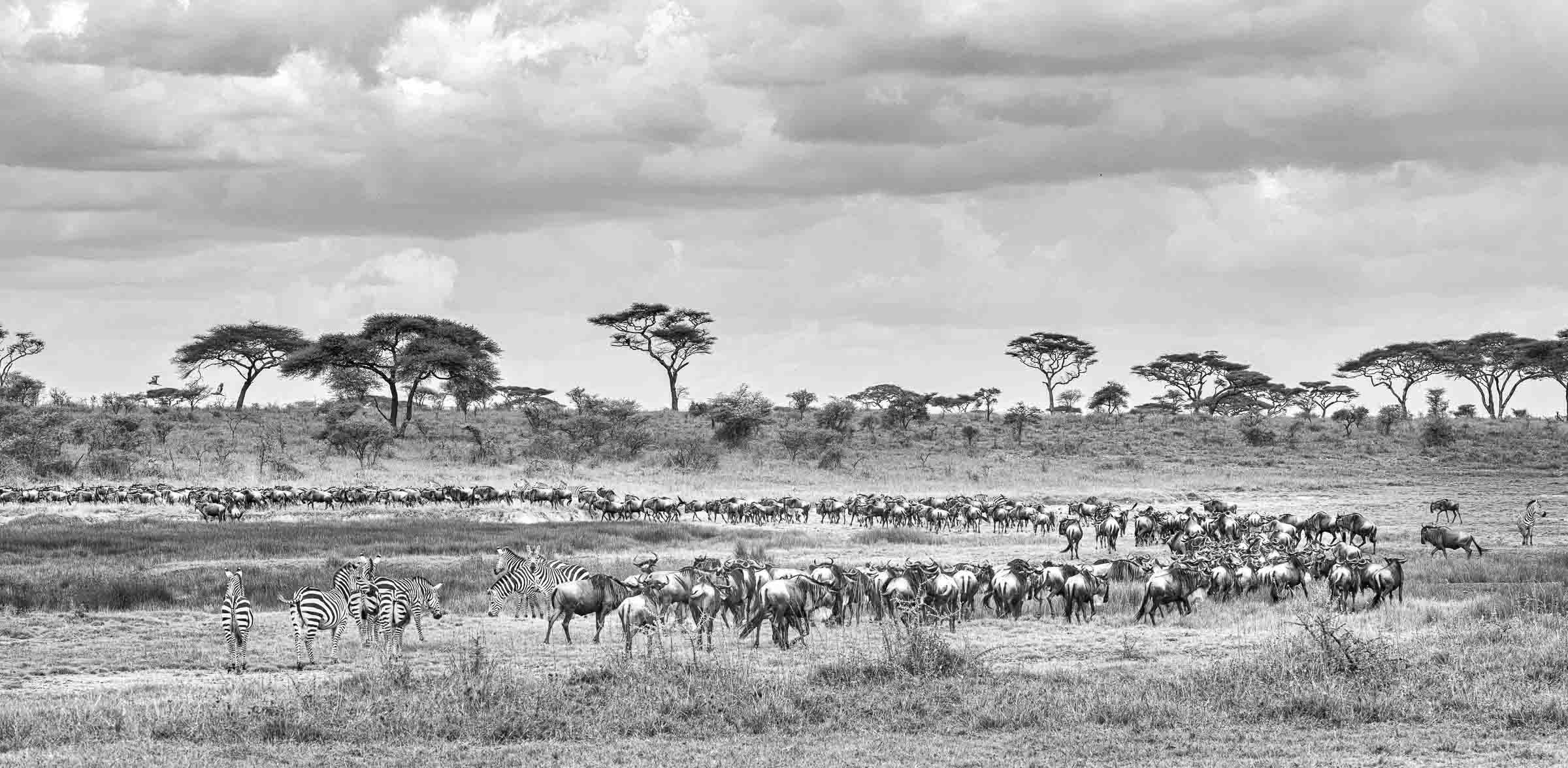
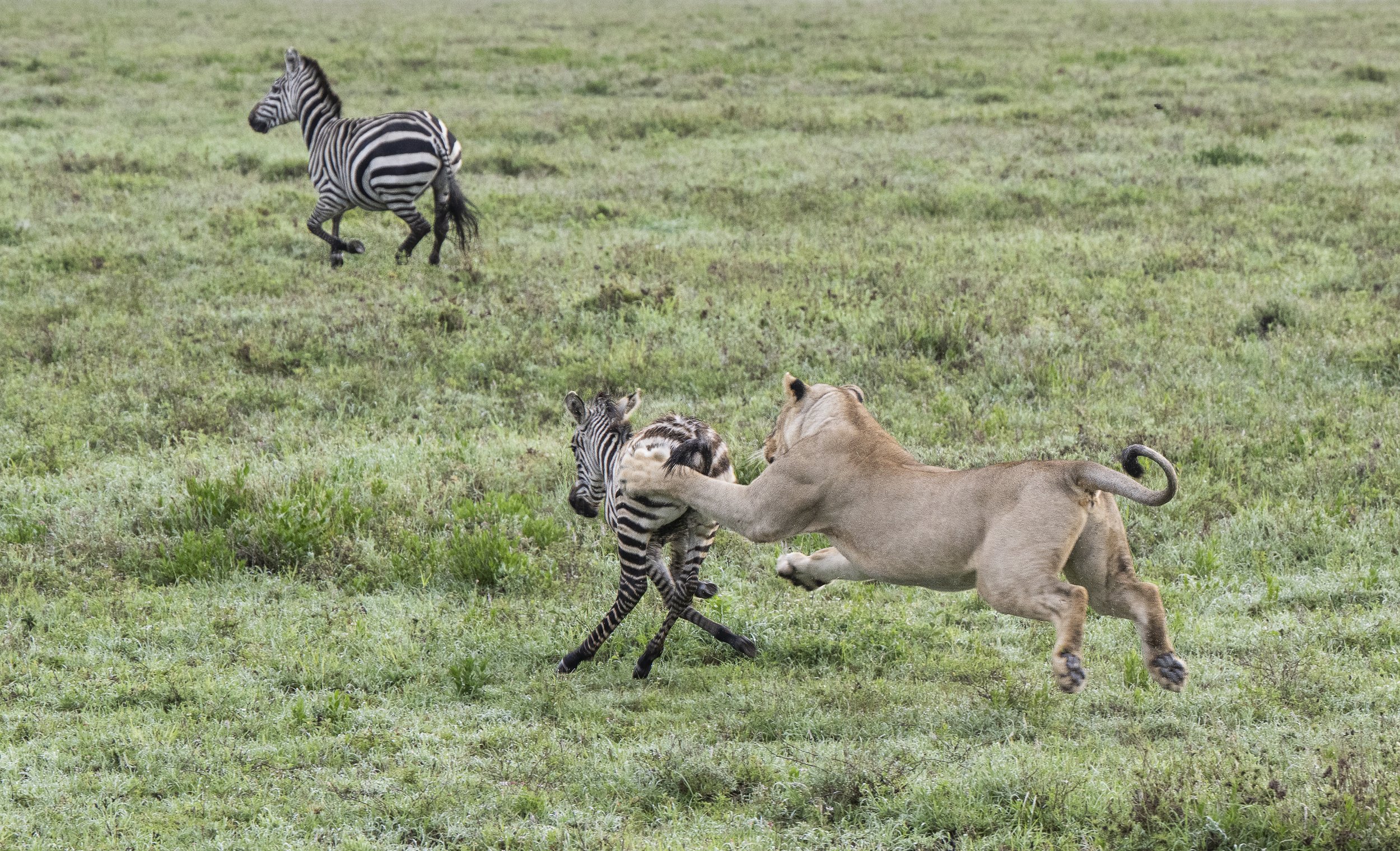
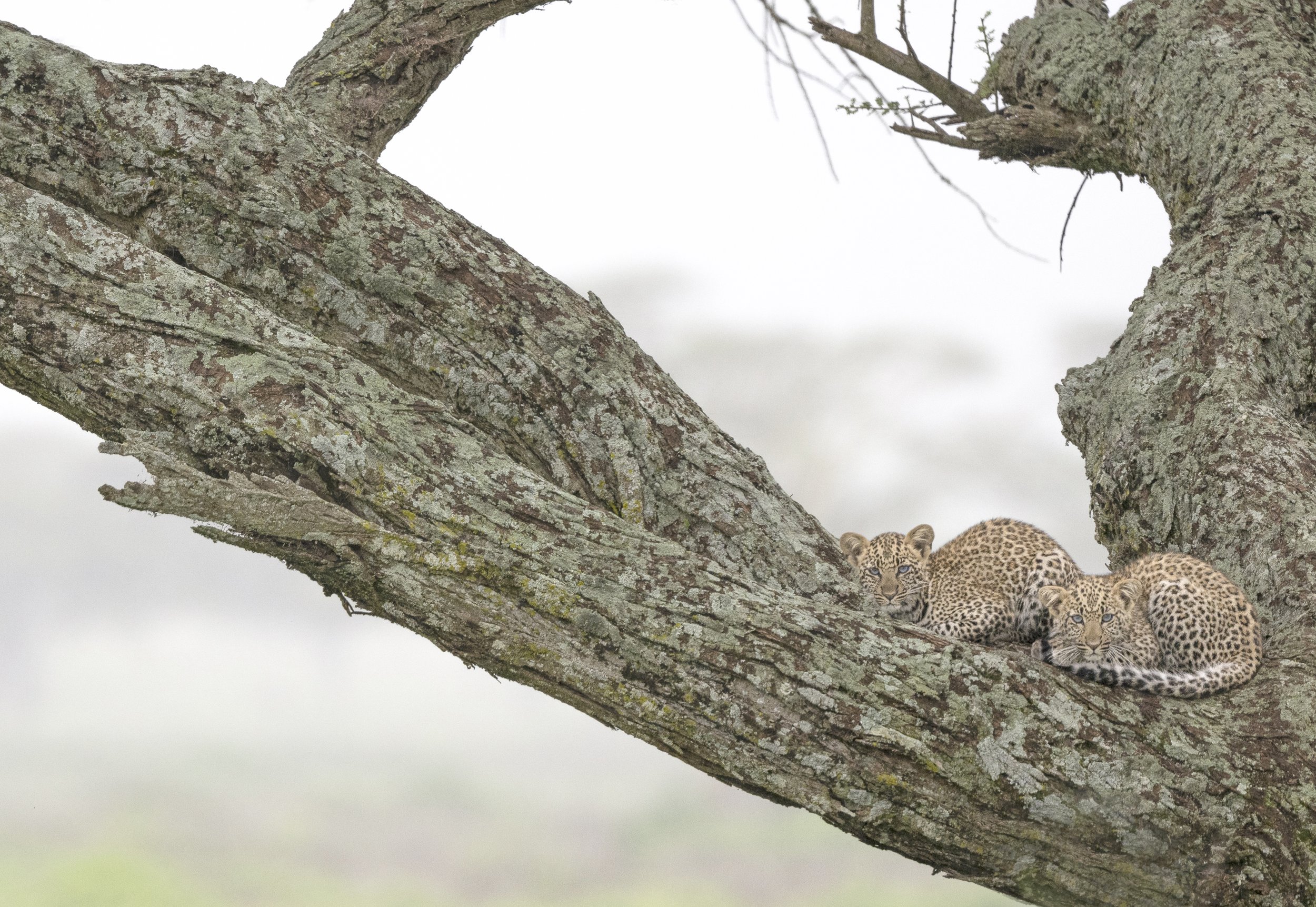
Nikon Z9 Wildlife Camera Settings
The following are the settings I configured in my Nikon Z9 for wildlife photography. I only mention the settings that I changed from the default factory settings. If I don’t highlight a setting it’s because I did not make a change.
SHOOTING MENU
Shooting Bank Menu is set to A for my WILDLIFE settings
Extended menu Bank set to ON
File Naming is set to my initials
Image Quality is set to RAW
Raw recording is set to High Efficiency*
ISO setting is at 64
White Balance is set to Natural light auto
Picture control is set to Neutral
Color Space is set to Adobe
Active D-lighting is set to OFF
Long Exposure NR is set to OFF
High ISO NR is set to OFF
Diffraction Compensation is set to ON
Auto distortion control is set to ON
Metering default setting is set to MATRIX
Focus mode default is set to AF-C
AF-area mode is set to WIde Area S as my default. (wide-area L and 3D tracking are my other go-to settings for wildlife)
AF subject detection is set to a default of Animal
Silent Photography is set to ON
CUSTOM SETTINGS
a1 AF-C Priority Selection is set to Focus + Release
a2 AF-S Priority Selection is set to Focus
a3 Focus Tracking with Lock-on is set to Quick 2 – Eratic
a5 Store points by orientation is set to OFF
a6 AF Activation is set to OFF
a7 Focus point persistence is set to OFF
a8 Limit AF-area mode selection – all checked
a9 Focus point restrictions – no restrictions
a10 Focus Point Wrap Around is set to ON
a11 Focus Point Display settings are ON ON OFF
a12 Built-In Assist illuminator is set to OFF
a13 Focus Peaking is turned ON
b1 EV Steps for exposure ctl is set to 1/3
c1 Shutter release button AE-L is set to OFF
d1 Continuous Shooting Speed – I Suggest 12fps and 4 fps. You can use 20fps for continuous high if you want.
d2 Maximum shots per burst is set to infinity
d3 Limit Release Mode Selection – Check All
d5 Extended shutter speeds (M) – ON
d11 LCD illumination is turned ON
e1 Flash Sync Speed is set to 1/250
e7 Bracketing Order – Under>MTR>over
f1 Customize i menu – Set picture control/WB/Interval timer/battery info/AF-area mode/subj detection/ Focus Mode?Metering?BKT/vibration reduction/Silent Mode/Airplane Mode/Exposure compensation
g2 Custom Control Assignments - See below
g10 limit Zebra pattern tone range is set to HIGHLIGHTS
SETUP MENU
Auto Rotate info display set to ON
Sensor Shield behavior at power off – ON
Clean image sensor – Clean at shutdown
Copyright Information set to ON – then configure
Camera Sounds– Shutter sound - ON
Silent Mode is set to ON
USB Power Delivery is set to ON
CUSTOM CONTROL ASSIGNMENT
Fn1 Shooting menu bank
Fn2 Focus mode/AF-area-mode
Fn3 Virtual Horizon
Fn4 My menu
AF-ON button Set up for back button focus
Sub-selector Focus point selection
Sub-selector center – RESET
Movie Record Button – 1:1 Zoom
f3 OK button Playback mode – Histograms
PLAYBACK MENU
Playback display options – Select ALL except OVERVIEW AND NONE
Image review OFF
After delete – Show Next
After burst show first Image in burst
Rotate tall set to ON
Portraiture images from Kenya
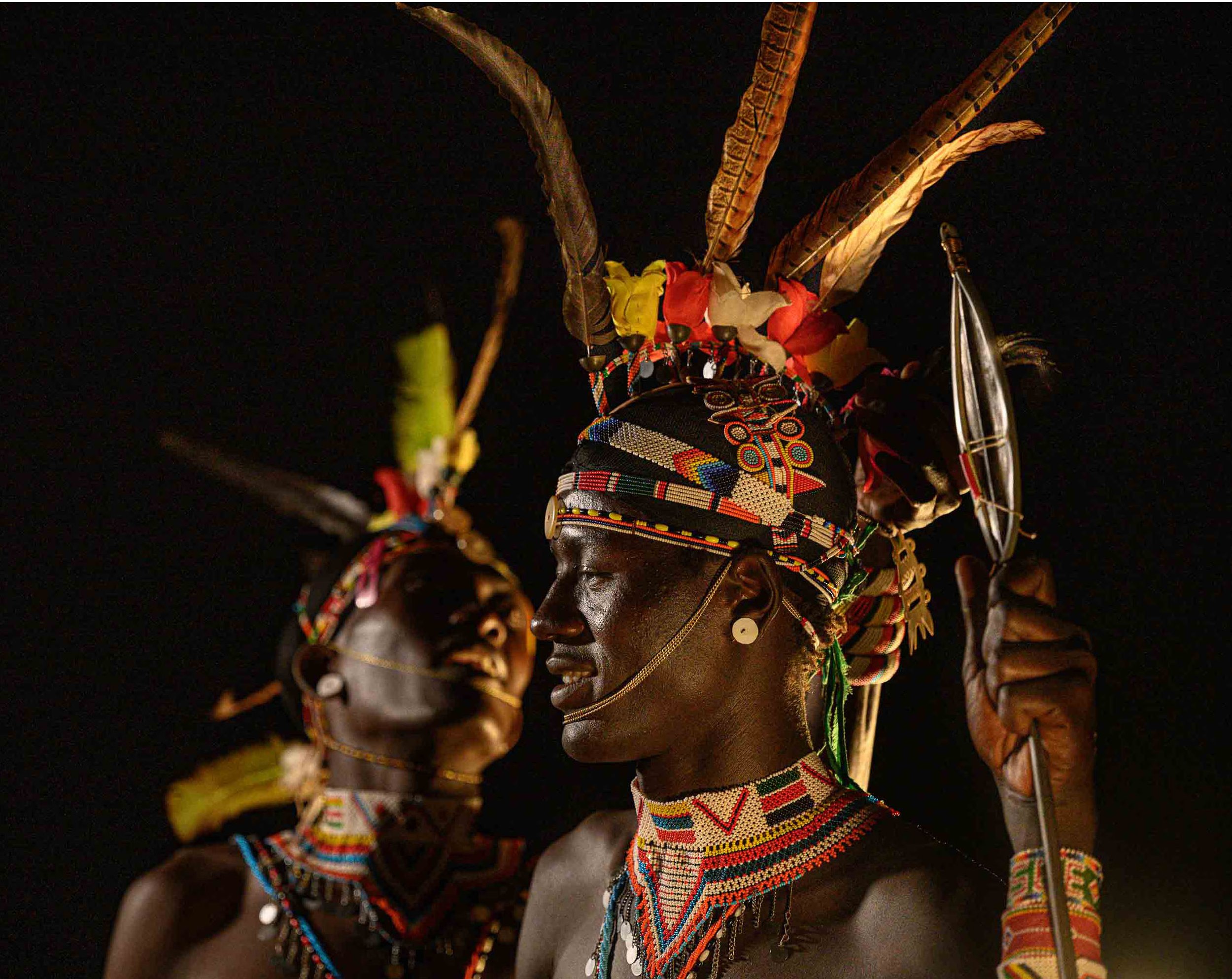



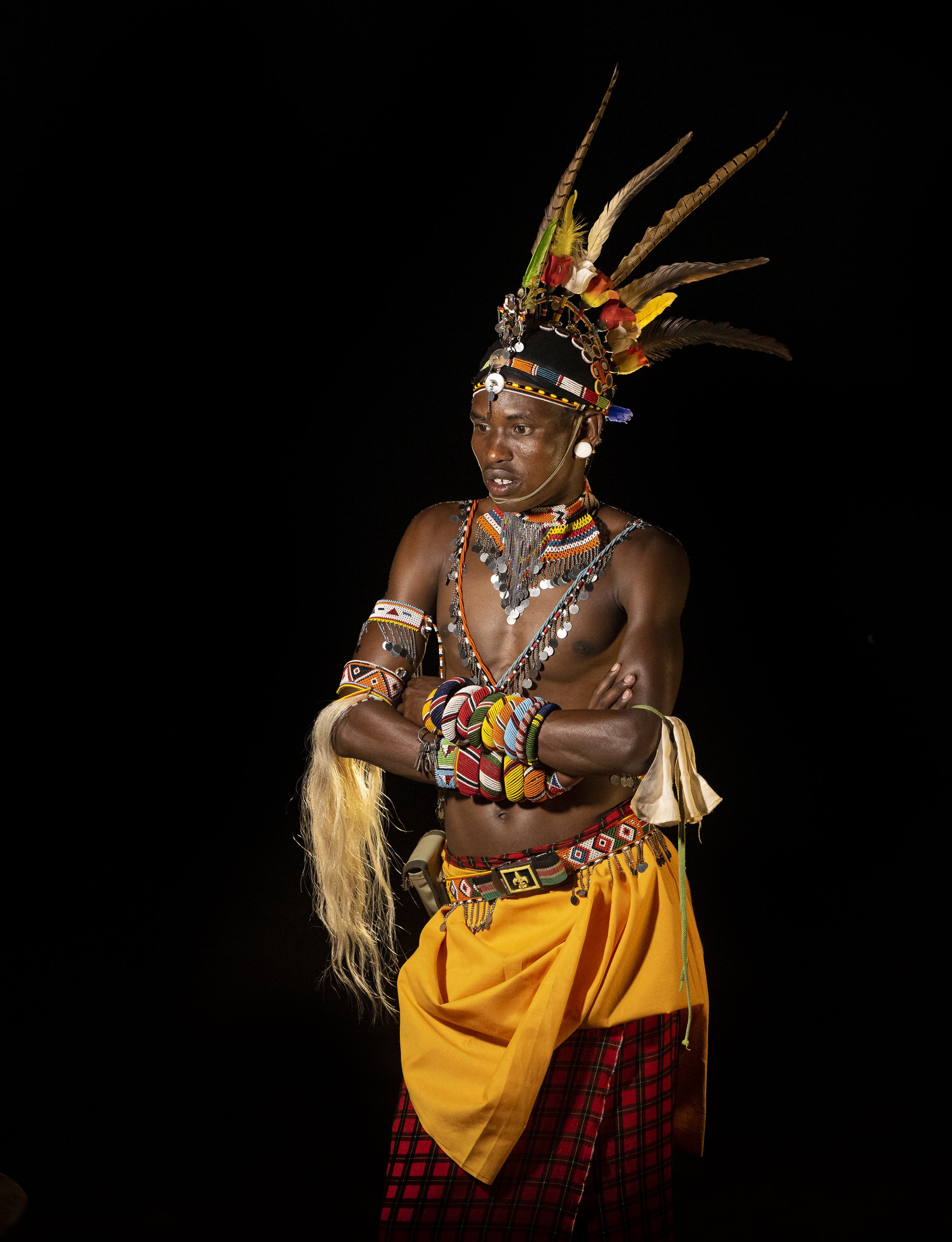
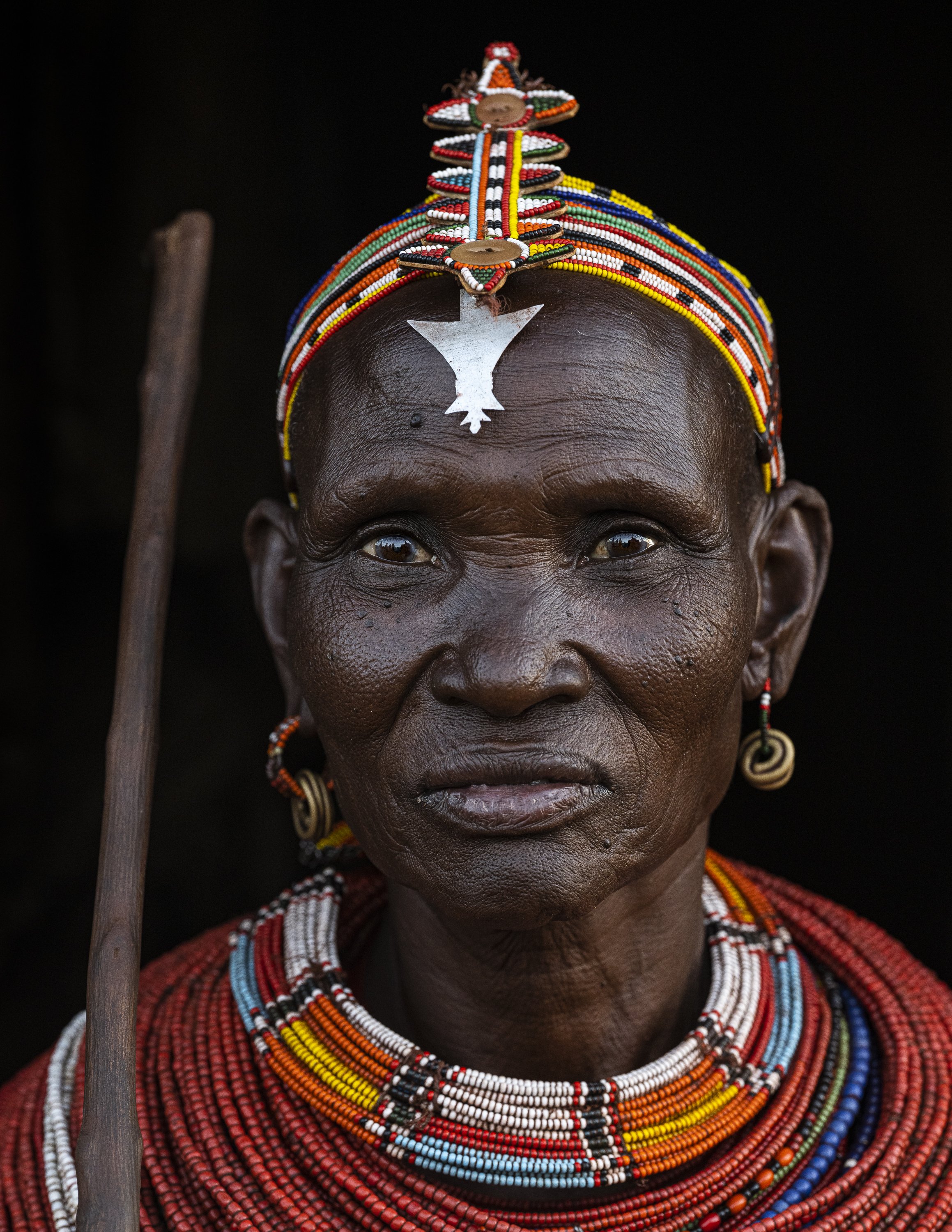

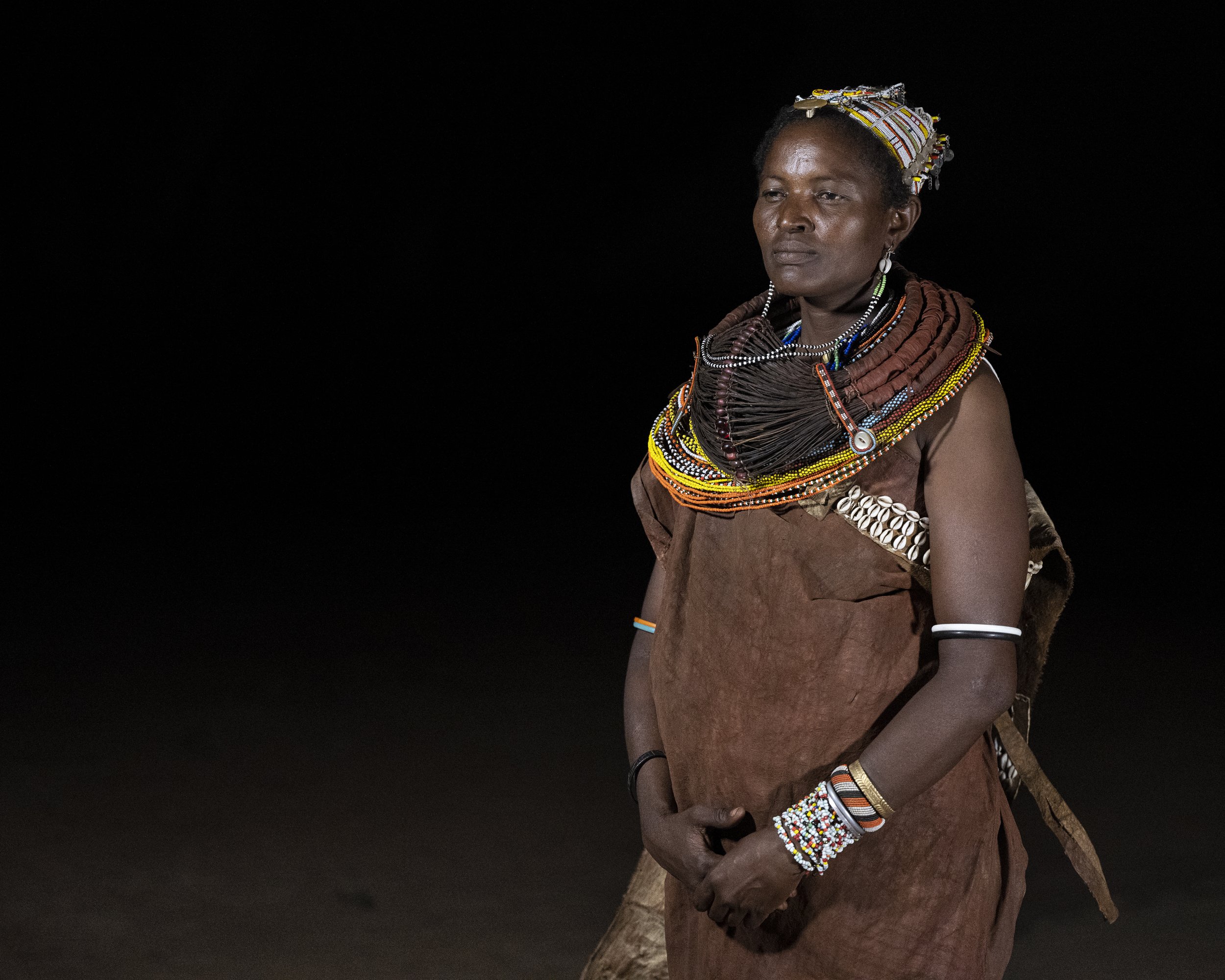
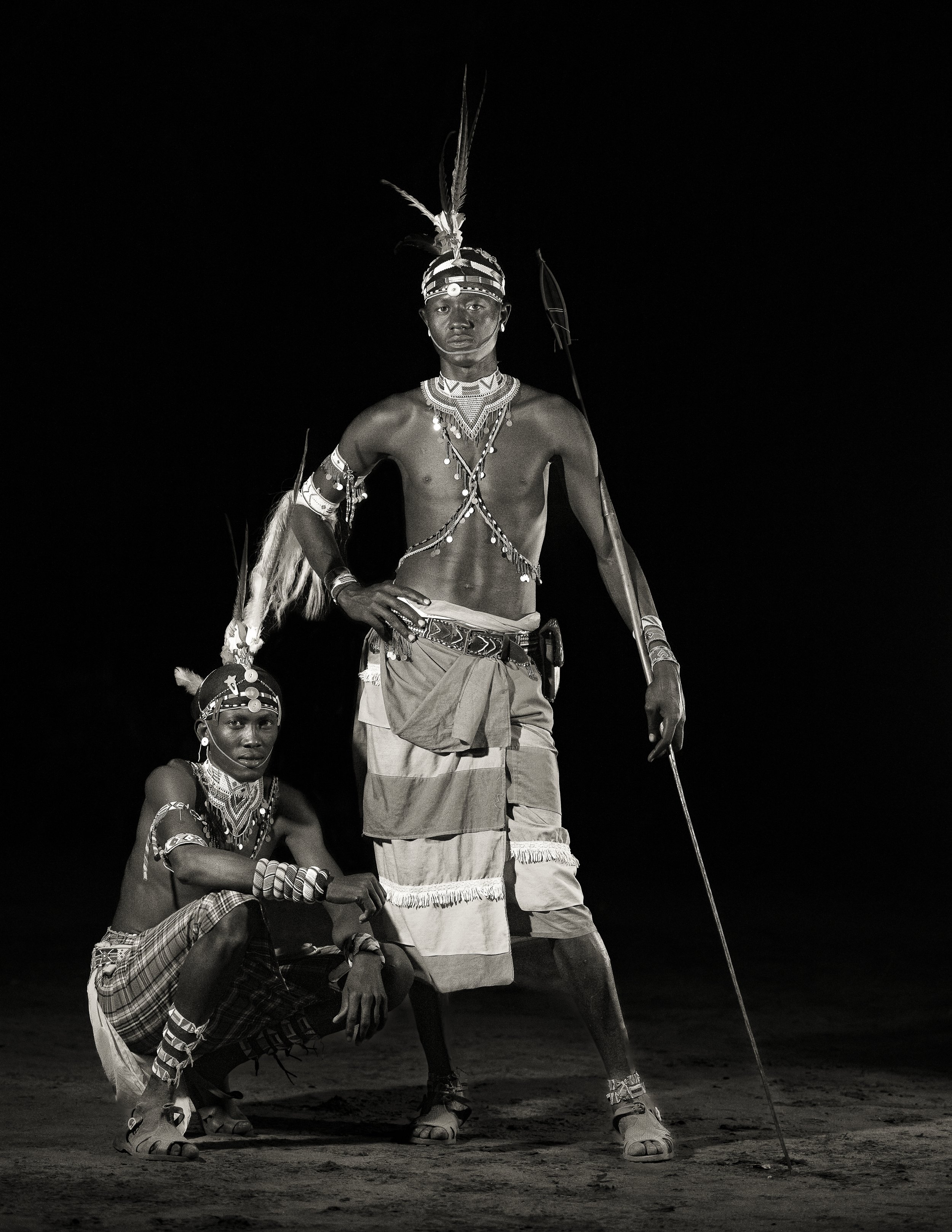
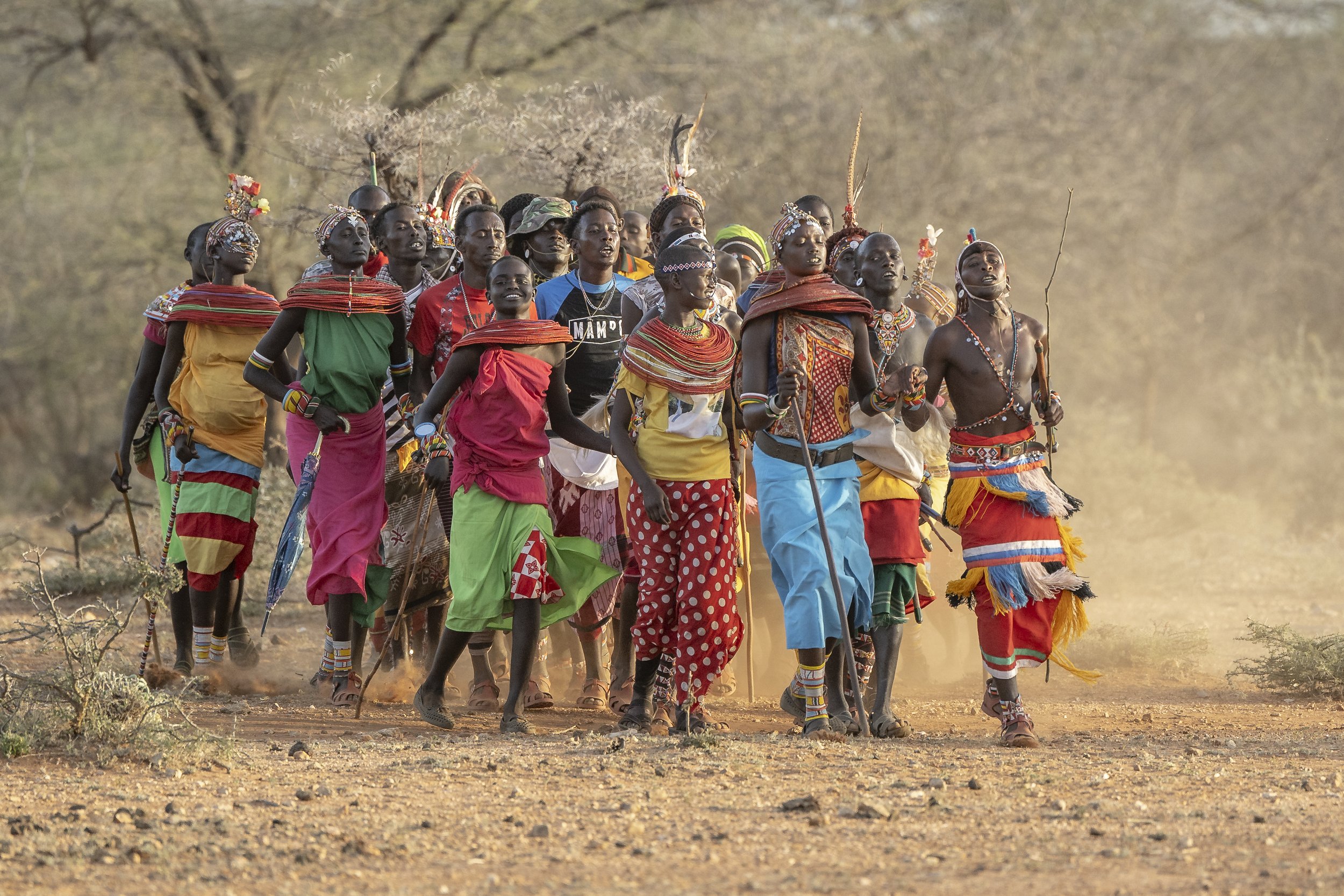
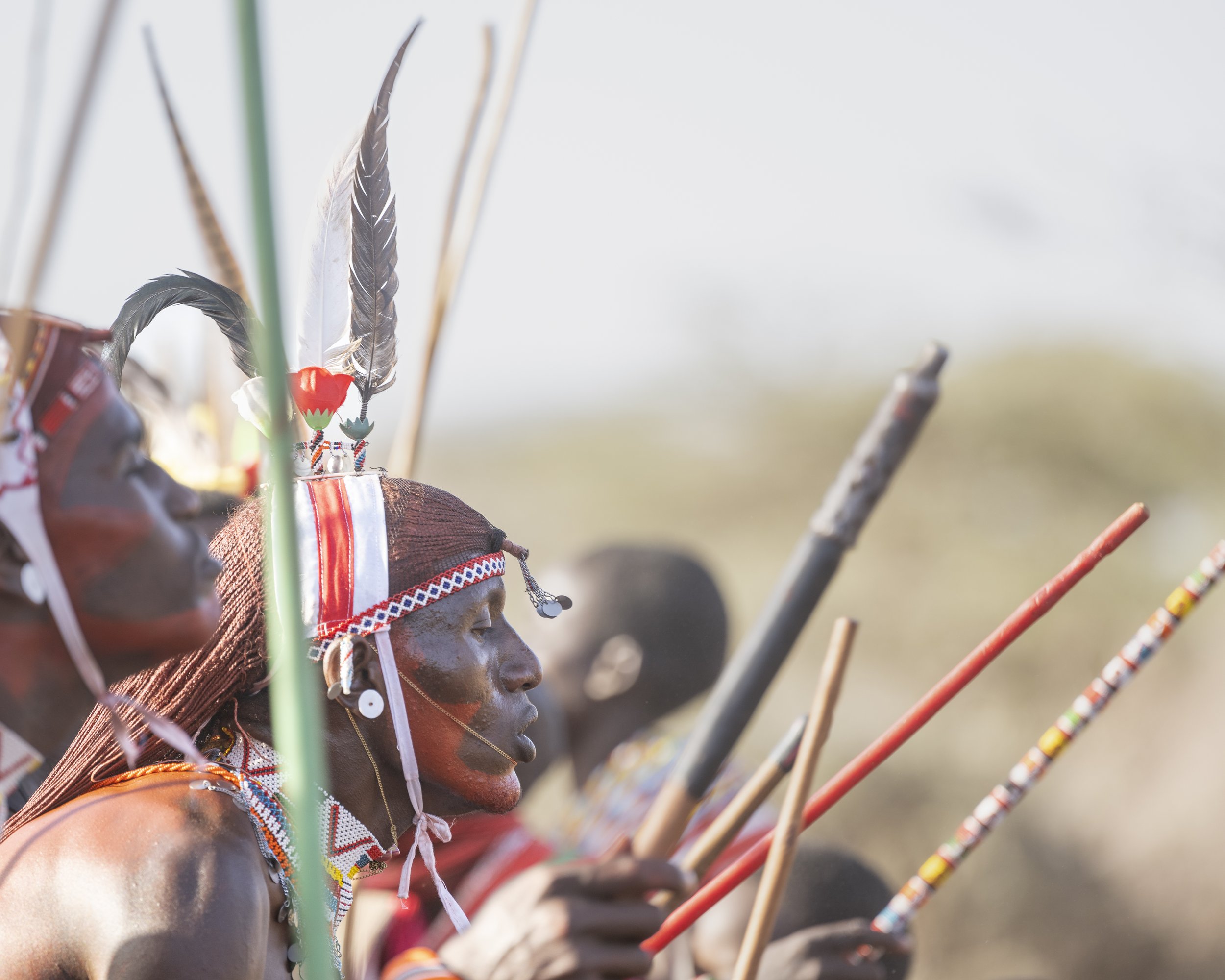
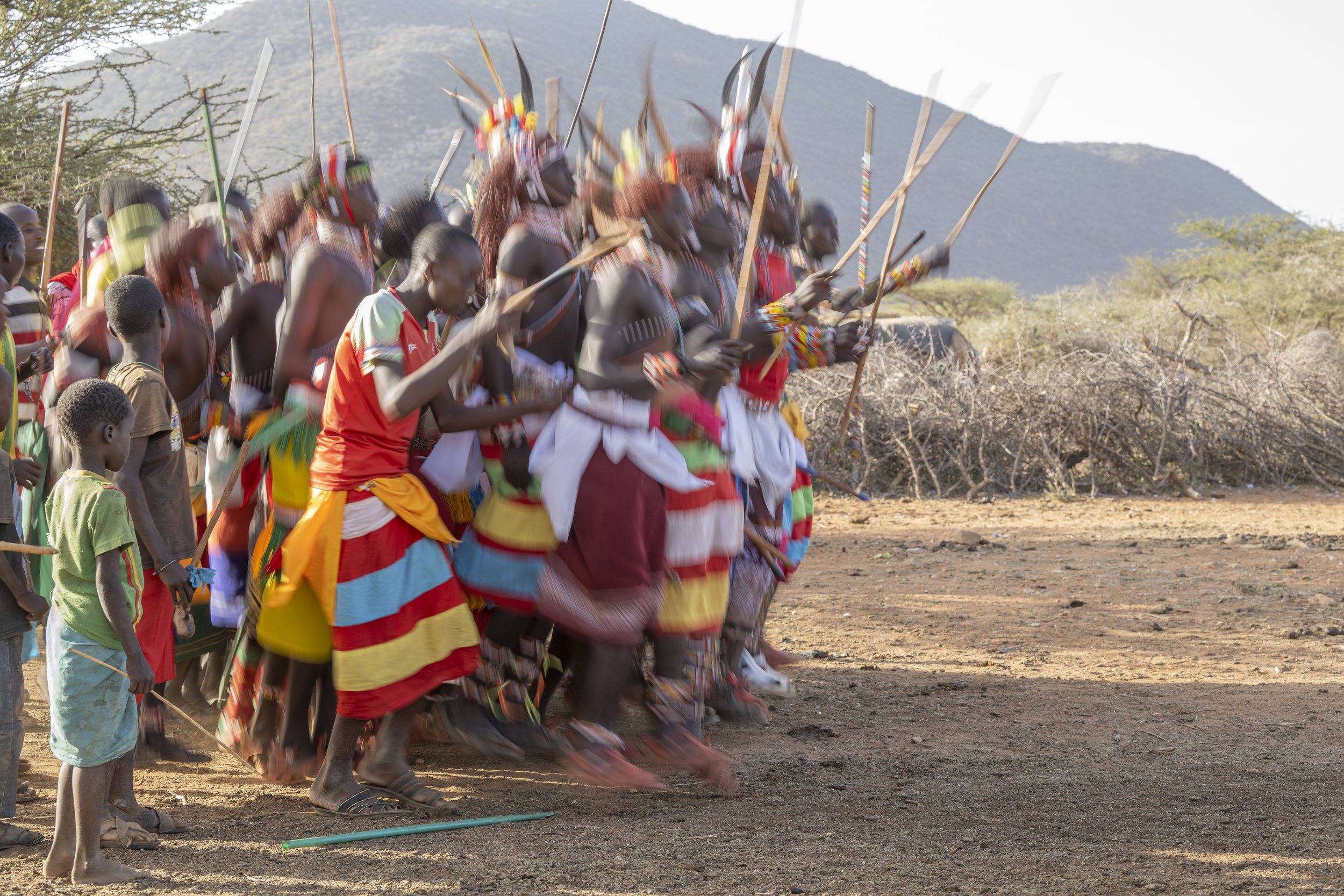
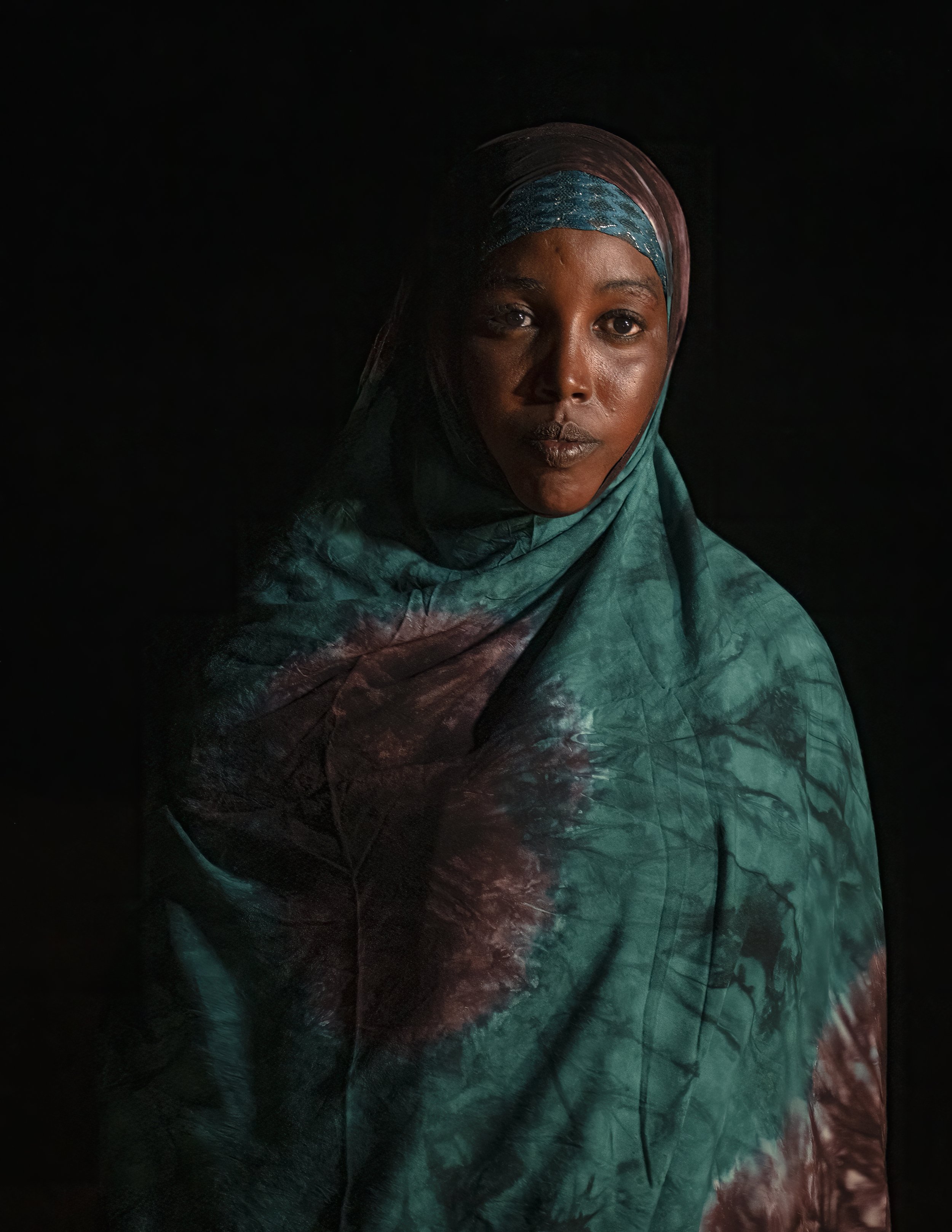
NIKON Z9 Portrait Camera SETTINGS
The following are the settings I configured in my Nikon Z9 for portrait photography. I only mention the settings that I changed from the default factory settings. If I don’t highlight a setting it’s because I did not make a change.
SHOOTING MENU
Shooting Bank Menu is set to B for my PORTRAIT settings
Extended menu Bank set to ON
File Naming is set to my initials
Image Quality is set to RAW
Raw recording is set to High Efficiency*
ISO setting is at 64
White Balance is set to Natural light auto
Picture control is set to Neutral
Color Space is set to Adobe
Active D-lighting is set to OFF
Long Exposure NR is set to OFF
High ISO NR is set to ON
Diffraction Compensation is set to ON
Auto distortion control is set to ON
Metering default setting is set to MATRIX
Focus mode default is set to AF-C low
AF-area mode is set to WIde Area L as my default. (wide-area S and single point are my other go-to settings for wildlife)
AF subject detection is set to a default of People
Silent Photography is set to OFF
CUSTOM SETTINGS
a1 AF-C Priority Selection is set to Focus + Release
a2 AF-S Priority Selection is set to Focus
a3 Focus Tracking with Lock-on is set to 3 – Steady
a5 Store points by orientation is set to ON
a6 AF Activation is set to OFF
a7 Focus point persistence is set to OFF
a8 Limit AF-area mode selection – all checked
a9 Focus point restrictions – no restrictions
a10 Focus Point Wrap Around is set to ON
a11 Focus Point Display settings are ON ON OFF
a12 Built-In Assist illuminator is set to OFF
a13 Focus Peaking is turned ON
b1 EV Steps for exposure ctl is set to 1/3
c1 Shutter release button AE-L is set to OFF
d1 Continuous Shooting Speed – I Suggest 4 fps in continual low. I always shoot a small burst when doing portraits without flash.
d2 Maximum shots per burst is set to infinity
d3 Limit Release Mode Selection – Check All
d5 Extended shutter speeds (M) – ON
d11 LCD illumination is turned ON
e1 Flash Sync Speed is set to 1/250
e7 Bracketing Order – Under>MTR>over
f1 Customize i menu – Set picture control/WB/Interval timer/battery info/AF-area mode/subj detection/ Focus Mode?Metering?BKT/vibration reduction/Silent Mode/Airplane Mode/Exposure compensation
g2 Custom Control Assignments - See below
g10 limit Zebra pattern tone range is set to HIGHLIGHTS
SETUP MENU
Auto Rotate info display set to ON
Sensor Shield behavior at power off – ON
Clean image sensor – Clean at shutdown
Copyright Information set to ON – then configure
Camera Sounds– Shutter sound - ON
Silent Mode is set to ON
USB Power Delivery is set to ON
CUSTOM CONTROL ASSIGNMENT
Fn1 Shooting menu bank
Fn2 Focus mode/AF-area-mode
Fn3 Virtual Horizon
Fn4 My menu
AF-ON button Set up for back button focus
Sub-selector – Focus point selection
Sub-selector center – RESET
Movie Record Button – 1:1 Zoom
f3 OK button Playback mode – Histograms
PLAYBACK MENU
Playback display options – Select ALL except OVERVIEW AND NONE
Image review OFF
After delete – Show Next
After burst show first Image in burst
Rotate tall set to ON
Z9 FIRMWARE UPDATES
Please visit this page on the Nikon website. Choose the Nikon Z9 and update your firmware. https://downloadcenter.nikonimglib.com/en/index.html
Learn more about firmware 2.0
If you want to learn more about the Nikon Z9, you should check out the manufacturer’s website.
If you want to shop for the Nikon Z9, shop in the USA here, shop in Canada here.
Click here if you want to see what the most popular DSLR and Mirrorless Cameras are in 2022
I hope I gave you some good insight into the new Nikon Z9 camera.
Kev

